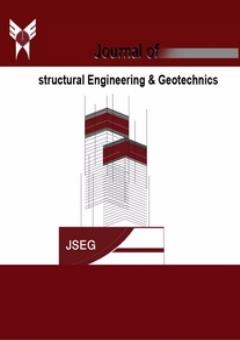-
-
List of Articles
-
Open Access Article
1 - Behavior Study of Cemented Specimen by Biological Technique after Disturbance
Mohammad Reza Asgari Mohammad Azadi -
Open Access Article
2 - The Effect of Viscous Dampers on Improvement of the Behavior of Tall Belt Truss Structures
Nasser Gholaman Mohammad Ali Jafari -
Open Access Article
3 - Bearing Capacity Zoning of Shallow Foundations in District 1 in Shiraz Municipality Using Geographic Information System (GIS)
Sara Afarid alireza Hajiani Boushehriana -
Open Access Article
4 - The Effect of Soccer Ball Impulse on Lower Limbs of the Human Body
Leila Shahryari Behtash JavidSharifi JavidSharifi Mohammad Ali Samianifar
-
The rights to this website are owned by the Raimag Press Management System.
Copyright © 2021-2025







